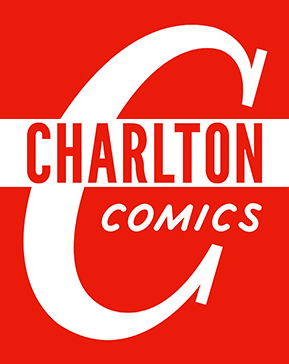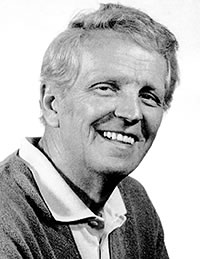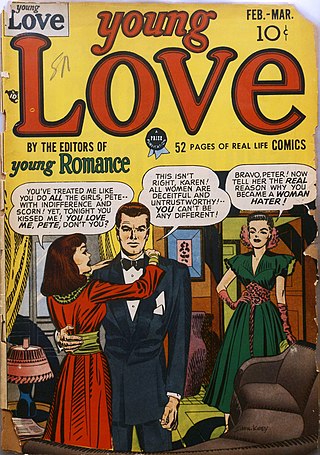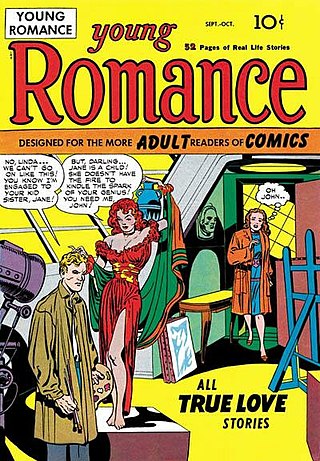
Charlton Comics was an American comic-book publishing company that existed from 1945 to 1986, having begun under a different name: T. W. O. Charles Company, in 1940. It was based in Derby, Connecticut. The comic-book line was a division of Charlton Publications, which published magazines, puzzle books, and briefly, books, under the imprints Monarch and Gold Star. It had its own distribution company, Capital Distribution.

Quality Comics was an American comic book publishing company which operated from 1937 to 1956 and was a creative, influential force in what historians and fans call the Golden Age of Comic Books.

Fawcett Comics, a division of Fawcett Publications, was one of several successful comic book publishers during the Golden Age of Comic Books in the 1940s. Its most popular character was Captain Marvel, the alter ego of radio reporter Billy Batson, who transformed into the hero whenever he said the magic word "Shazam!".
Notable events of 1965 in comics.
See also: 1940s in comics, other events of the 1950s, 1960s in comics and the list of years in comics

Michael Sekowsky was an American comics artist known as the penciler for DC Comics' Justice League of America during most of the 1960s, and as the regular writer and artist on Wonder Woman during the late 1960s and early 1970s.

Vincent Colletta was an American comic book artist and art director. He was one of Jack Kirby's frequent inkers during the 1950s-1960s Silver Age of comic books. This included some significant early issues of Marvel Comics' Fantastic Four, and a long, celebrated run on the character Thor in Journey into Mystery and The Mighty Thor.

George Tuska, who early in his career used a variety of pen names including Carl Larson, was an American comic book and newspaper comic strip artist best known for his 1940s work on various Captain Marvel titles and the crime fiction series Crime Does Not Pay and for his 1960s work illustrating Iron Man and other Marvel Comics characters. He also drew the DC Comics newspaper comic strip The World's Greatest Superheroes from 1978–1982.

Atlas Comics was the 1950s comic-book publishing label that evolved into Marvel Comics. Magazine and paperback novel publisher Martin Goodman, whose business strategy involved having a multitude of corporate entities, used Atlas as the umbrella name for his comic-book division during this time. Atlas evolved out of Goodman's 1940s comic-book division, Timely Comics, and was located on the 14th floor of the Empire State Building. This company is distinct from the 1970s comic-book company, also founded by Goodman, that is known as Atlas/Seaboard Comics.
William Robert Brown was an American comics artist with an extensive career from the early 1940s through the 1970s. With writers Edmond Hamilton and Gardner Fox, Brown co-created the DC Comics hero Space Ranger, drawing the character's complete run from his debut in the try-out comic Showcase #15 through Mystery in Space #103.

Young Love is one of the earliest romance comics titles, and was published by Crestwood/Prize and later sold to DC Comics.

L. Miller & Son, Ltd. was a British publisher of magazines, comic books, pulp fiction and paperback books intended primarily to take advantage of the British ban on importing printed matter. Between 1943 and 1966, the firm published British editions of many American comic books, primarily those of Fawcett Comics and American paperback books, primarily those of Fawcett Publications' Gold Medal Books. The company is best known for the 1954 creation of Marvelman – a blatant imitation of the Golden Age Captain Marvel – after America's Fawcett Publications capitulated to National Periodicals. L. Miller & Son also published a large line of Western comics — many reprints but also some original titles - and both category fiction and non-fiction paperbacks.

Romance comics are a genre of comic books that were most popular during the Golden Age of Comics. The market for comics, which had been growing rapidly throughout the 1940s, began to plummet after the end of World War II when military contracts to provide disposable reading matter to servicemen ended. This left many comic creators seeking new markets. In 1947, part of an effort to tap into new adult audiences, the romance comic genre was created by Joe Simon and Jack Kirby with the Crestwood Publications title Young Romance.

Young Romance is a romantic comic book series created by Joe Simon and Jack Kirby for the Crestwood Publications imprint Prize Comics in 1947. Generally considered the first romance comic, the series ran for 124 consecutive issues under Prize imprint, and a further 84 published by DC Comics after Crestwood stopped producing comics.

Jack Oleck was an American novelist and comic book writer particularly known for his work in the horror genre.
Bill Draut was an American comic book artist best known for his work at Harvey Comics and DC Comics from the 1940s to the 1970s.

Thorpe & Porter was a British publisher, importer, and distributor of magazines and comic books. At first, the company was known for repackaging American comics and pulp magazines for the UK market. Later on, it became a publisher of original material. The company released more than 160 comics titles in the UK, the most prominent being Classics Illustrated, MAD UK, Edgar Rice Burroughs' Tarzan of the Apes, Larry Harmon's Laurel & Hardy, House of Hammer, and Forbidden Worlds. T & P's most prominent imprints were Top Sellers Ltd. and Brown Watson. Thorpe & Porter operated from 1946 to c. 1979.
Arnold Book Company (ABC) was a British publisher of comic books that operated in the late 1940s and 1950s, most actively from 1950 to 1954. ABC published original titles like the war comic Ace Malloy of the Special Squadron and the science fiction title Space Comics, and reprints of American horror and crime titles like Adventures into the Unknown, Black Magic Comics, and Justice Traps the Guilty. British contributors to the company's titles include Mick Anglo and Denis Gifford. Arnold Book Company was closely connected to the fellow British comics publisher L. Miller & Son.










